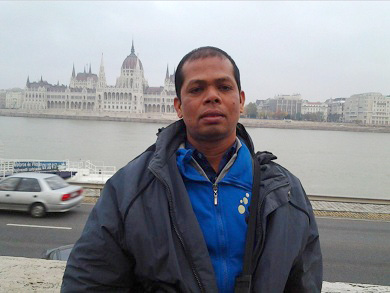Meaning the Values of Onang-Onang Voice at the Manortor's Tradition
Abstract
The margondang ceremony is completed with panaekkon gondang to open the galanggang 'na so marongit, tapian na so marlinta' which is followed by a manortor ceremony accompanied by onang-onang poetry. Poems sung by paronang-onang accompanied by gondang instrumental music at traditional ceremonies. The data of onang-onang poetry was taken at the Angkola traditional marriage ceremony, in the city of Medan. Barthes (1957:140-142) uses the concept of value according to Barthes (1957:140-142), namely: 1) values related to the subject; 2) values appear in a practical context; 3) value concerns the properties that are 'added' by the subject. taken based on the analysis data classified the results of the analysis of the values of the Angkola traditional onang-onang poetry, among others: the values contained in the lyrics of the Angkola traditional onang-onang poems include: 1. Values Relating to the Subject: a) The Value of Parental Love for Children and Son-in-law b) Advice for Living in harmony, c) Maintaining kinship relations. 2. Values appear in a practical context: a) Belief in the Almighty, b) Forms of Parental Love. 3. The Value of the Characteristics 'Added' by the Subject: a) Angkola Identity Value, and b) Aesthetic Value
Keywords
Full Text:
PDFReferences
Amri, Yusni Khairul. (2011). Tradisi Lisan Upacara Perkawinan Adat Tapanuli Selatan: Pemahaman Leksikon Remaja Di Padangsidimpuan. Medan: Universitas sumatera Utara
Barthers, Roland.(2007). Petualangan Semiologi.Yogyakarta: Pustaka Pelajar.
Barthes, Roland. (1957). Mythologies. Paris: Editions du Seuil.
Lubis, Z. Pangaduan, (2001). “Revitalisasi Kebudayaan Mandailing” (Makalah) Disampaikan pada Seminar Adat Mandailing di Medan, 28 April 2001.
Moleong, lexy J. (2009). Metodelogi Penelitian Kualitatif Edisi Revisi. Bandung: Remaja Rosda Karya.
Nasution H. Pandapotan, (2005). Adat Budaya Mandailing: dalam Tantangan Zaman. Medan: Forkala.
Parsadaan Marga Harahap Dohot Anakboruna, Karya Bersama. (1993). Horja “Adat Istiadat Dalihan Na Tolu”. Jakarta : Parsadaan Marga Harahap Dohot Anakboruna di Jakarta Sahumaliangna
Pudentia. (2003). Antologi Prosa Rakyat Melayu Indonesia. Jakarta: Pusat Bahasa.
Purba, N. (2020). The Use of Simalungun Language by Anak Boru Sanina in the Simalungun Wedding Ceremony (Sociolinguistic Studies). Lakhomi Journal: Scientific Journal of Culture. 1-7
Ritonga, Parlaungan dan Ridwan Azhar, (2002), Sistem Pertuturan Masyarakat Tapanuli Selatan, Medan: Yandira Agung.
Sibarani, Robert, (2004), Antropolinguistik: Antropologi Linguistik-Linguistik Antropologi, Medan: Penerbit Poda. (ISBN 979-3150-02-5).
Sibarani, Robert. (2012). Kearifan Lokal “Hakekat, Peran, dan Metode Tradisi Lisan. Jakarta: Asosiasi Tradisi Lisan (ATL)
Sinar, Tengku Silvana, (2010). ”Ungkapan Verbal Etnis Melayu dalam Pemeliharaan Lingkungan.” Disampaikan dalam Seminar Internasional Seminar Language, Literature, And Culture in Southheast Asia. Diselenggarakan oleh Prodi Linguistik USU dan Phuket Rajabhat University Thailand, Thailand 3-5 Juni 2010.
Siregar, Krisna, Anni. (2002). Onang-onang Dalam Upacara Adat Perkawinan Batak Angkola, Karya Ilmiah. Medan : Universitas Sumatera Utara
DOI: https://doi.org/10.33258/birci.v5i3.6881
Article Metrics
Abstract view : 24 timesPDF - 20 times
Refbacks
- There are currently no refbacks.

This work is licensed under a Creative Commons Attribution-ShareAlike 4.0 International License.

This work is licensed under a Creative Commons Attribution-ShareAlike 4.0 International License.

_.gif)

















_.gif)



